Technologies
The Galaxy Z Fold 5 Features I Really Want to See
Commentary: Samsung’s next big foldable phone needs a bigger cover screen and more software capabilities that make use of its foldable form.
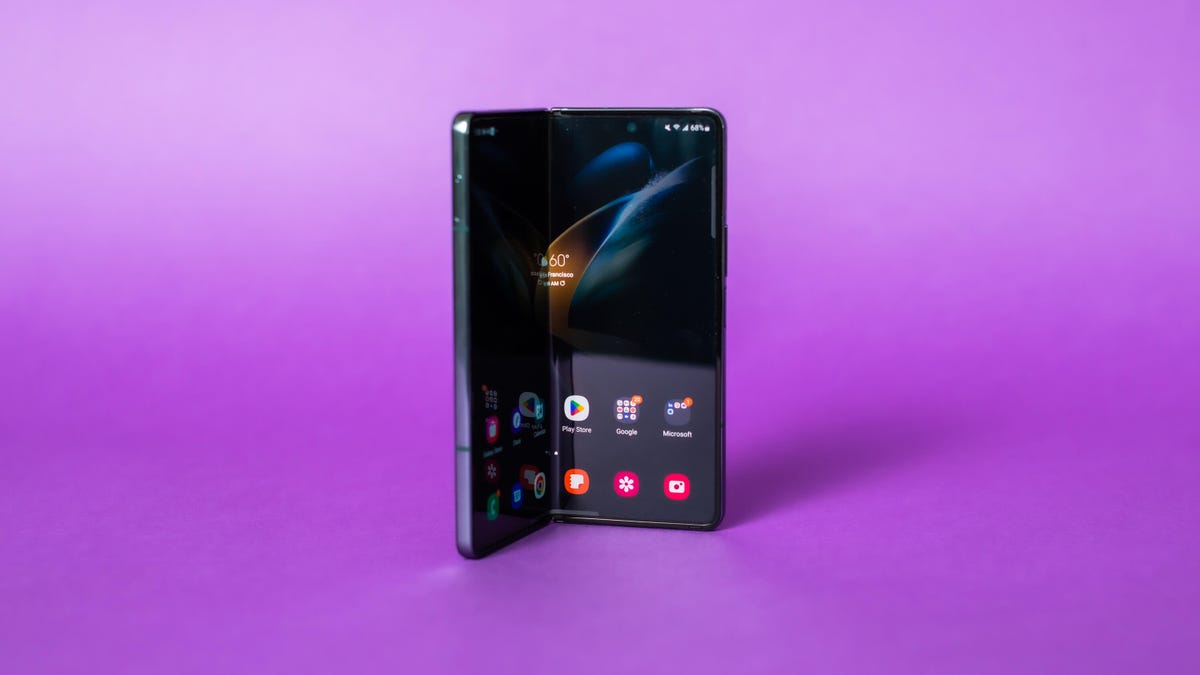
Advertiser Disclosure
With the Galaxy Z Fold 4, Samsung made a few changes that went a long way in improving the way its book-style foldable functions as a regular phone. That includes a better camera that’s on par with the Galaxy S22’s, a slightly improved design and a fresh processor. But there are plenty of ways Samsung could further upgrade its large-format foldable phone. And considering Samsung is facing new competition from the upcoming Google Pixel Fold, I hope it takes action.
The biggest change I’m hoping to see in the Galaxy Z Fold 4’s successor (which will likely be called the Galaxy Z Fold 5, though we don’t know that for certain) is more software that takes advantage of its foldable shape. Having a giant screen that fits in your pocket is great. But Samsung needs to provide a more convincing argument if it truly wants foldables to be appealing to more than just early adopters.
The Galaxy Z Fold is on its fourth generation, yet foldables still haven’t had the breakout moment Samsung has been waiting for. Although sales of foldable phones are growing, they will only account for 1.1% of the overall smartphone market in 2022, according to projections from the International Data Corporation.
Samsung is holding its next Unpacked event next month in South Korea, so it’s possible we’ll hear more about the next Z Fold then. Here’s everything I’m hoping to see from the Galaxy Z Fold 5 next year.
More software features
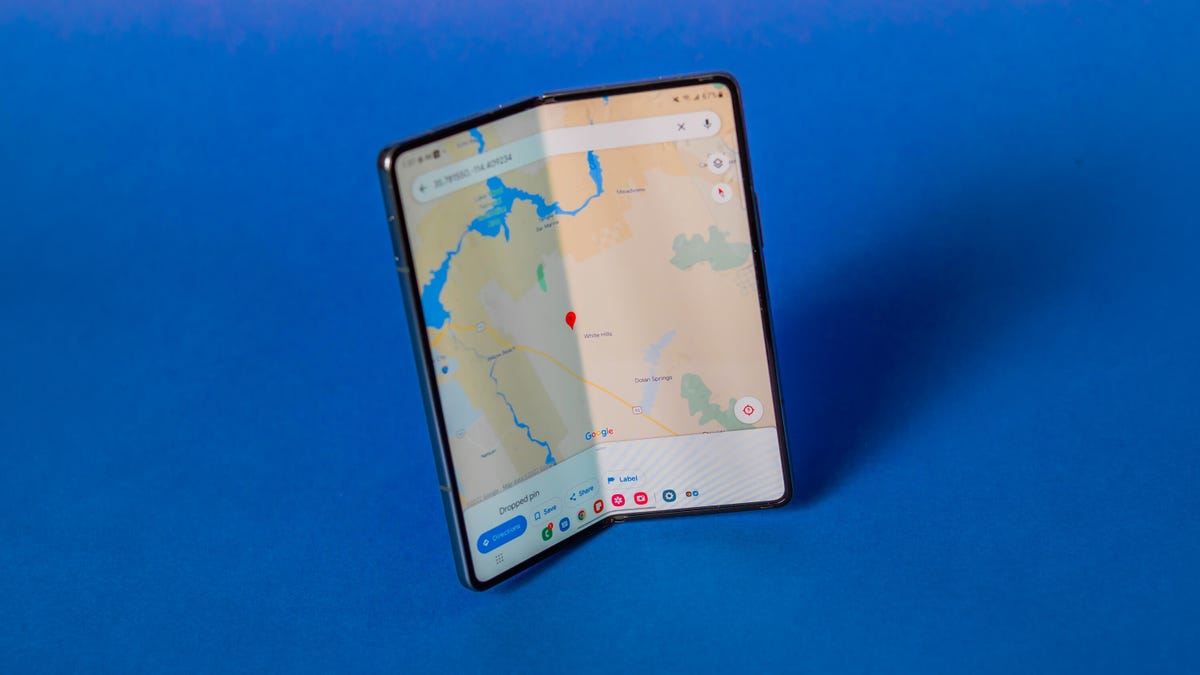
Samsung’s Galaxy Z Fold 4 offers a giant screen that fits in your pocket. But it needs more than that to win people over.
Yes, the Galaxy Z Fold’s design is what makes it noteworthy. But impressive hardware doesn’t mean much without the software to go with it. Samsung has done a lot to improve the way apps work across the Z Fold’s 7.6-inch inner display in the years since its launch. For example, the Z Fold 4 has a dock that sits at the bottom of the screen for quickly accessing apps, as well as the ability to use the bottom half of the screen as a touchpad when in Flex Mode.
The problem is that these features don’t do a great job at convincing users why they should want a foldable phone in the first place. Instead, they just make the process of using apps on the Z Fold slightly easier and more convenient.
I don’t think any company has answered that question adequately just yet, but I have seen some promising attempts. Microsoft’s Surface Duo 2, for example, turns into a digital book when you open the Kindle app, complete with page-turn animations. It’s worth remembering, however, that the Surface Duo is different from the Z Fold since it consists of two separate displays joined together by a hinge. That could change with Microsoft’s next Duo, however, according to a report from Windows Central. The Galaxy Z Fold 4 is also a much better phone overall thanks to its superior camera and smoother software improvements, among other benefits.
Google is also thinking about ways to leverage both the outer and inner screens on its forthcoming Pixel Fold for tasks like language translation. Though we have yet to use the Pixel Fold extensively, it’s refreshing to see ideas that feel new when it comes to how software conforms to foldable devices. Hopefully Samsung will take note.
Samsung was among the first to release a foldable phone, meaning it’s had a longer lead time than most competitors in this department. That’s another reason why I’m hoping to see more ambitious features from Samsung in future versions of the Galaxy Z Fold.
A larger cover screen

The Google Pixel Fold.
The Galaxy Z Fold 4 is slightly wider than its predecessor, which makes it feel more like a regular phone when closed. However, I’d like to see Samsung take that a step further with the Galaxy Z Fold 5. The upcoming Pixel Fold made me realize how useful it feels to have a cover screen that nearly matches the shape and width of the display on a regular, nonfolding phone. Though I’ve spent only a few minutes with the Pixel Fold, that was enough time to see how using apps could feel more natural on a broader screen.
That said, I imagine making the screen too wide could present some challenges for Samsung, given that doing so would likely impact the shape and aspect ratio of the interior screen too.
An embedded S Pen
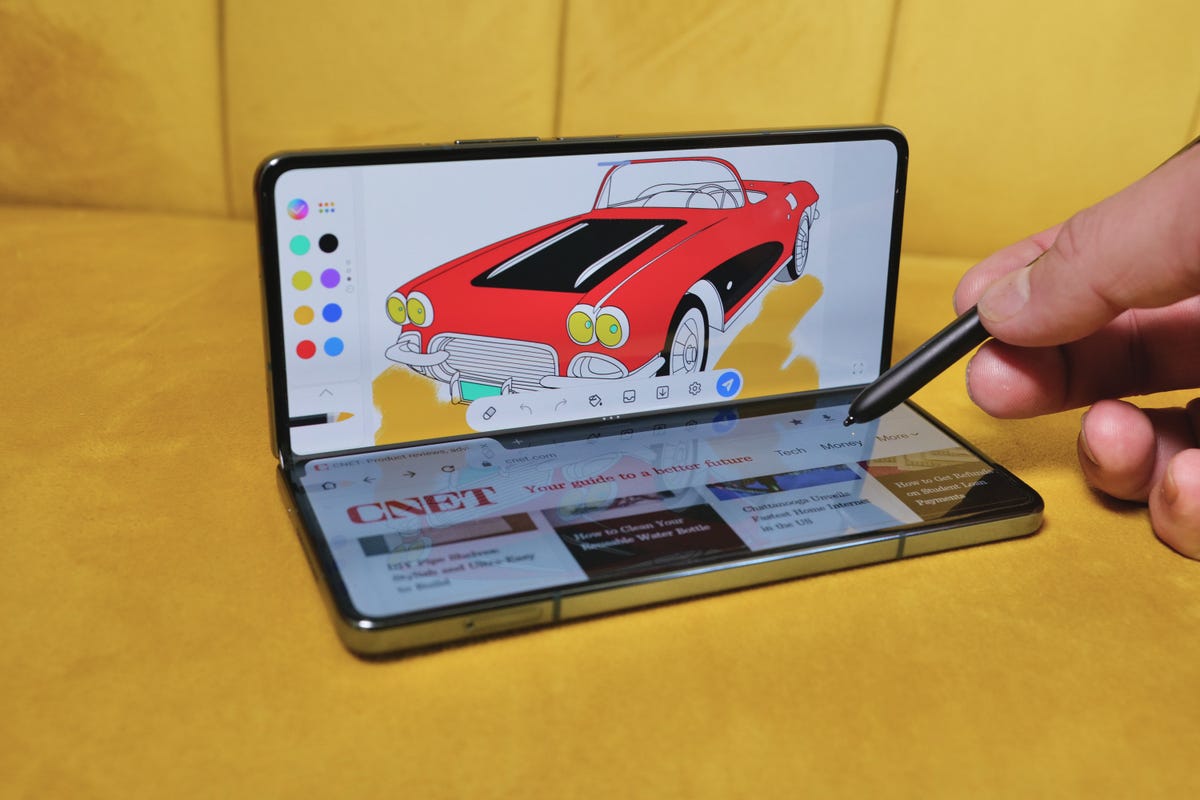
The Galaxy Z Fold 4 and Z Fold 3 support the S Pen, but you have to buy it separately.
The S Pen could help Samsung address that critical question of who the Galaxy Z Fold is for. The Galaxy Z Fold 3 and 4 both support the S Pen, but you must buy it separately and there’s no storage mechanism for it. Instead, Samsung should bundle the S Pen with the Galaxy Z Fold 5 and add a way to conveniently store it within or attach it to the device.
Doing so could make the Galaxy Z Fold 5 even more useful for taking notes, sketching and editing documents. That might not be important to everyone, but it could make the Z Fold more appealing to the productivity-oriented crowd that Samsung seems to be targeting. It would also make the Z Fold’s high price a bit easier to swallow since you’ll be getting more for your money.
Samsung hasn’t discussed its plans for the Galaxy Z Fold series. But a report from The Elec says Samsung has cited the addition of an S Pen slot as a key challenge that must be overcome to make foldables more popular. That means Samsung may at least be thinking about bundling the S Pen with its future foldables.
A less noticeable crease
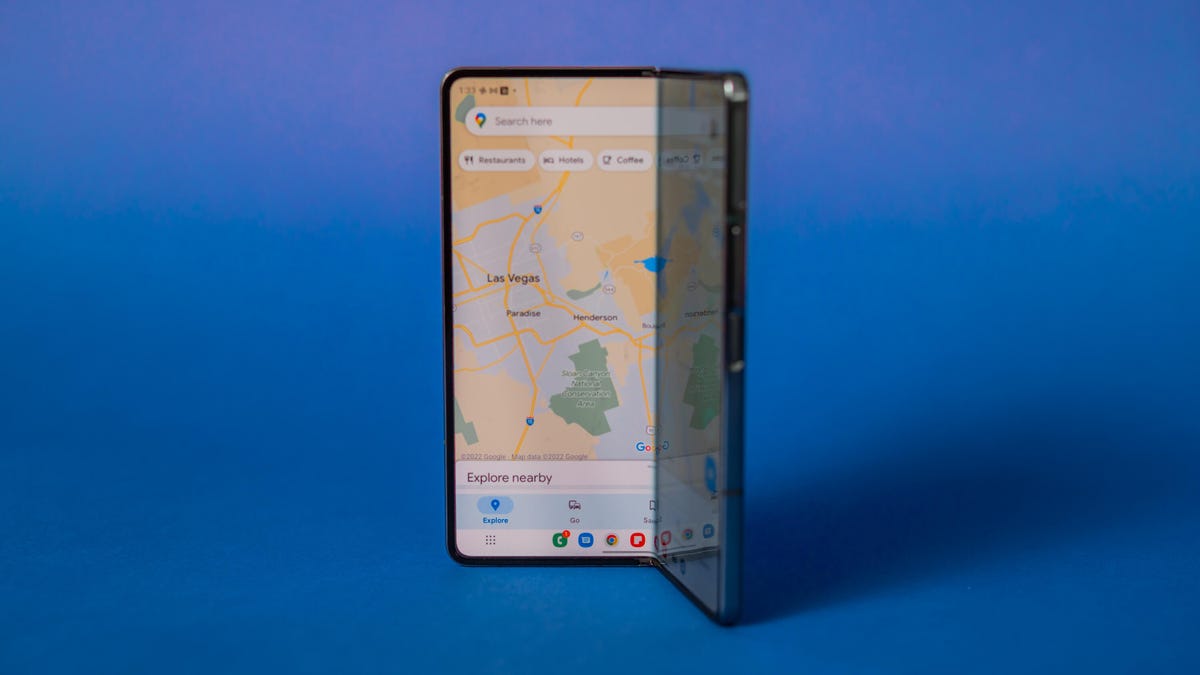
The Galaxy Z Fold 4’s crease still stands out.
Samsung has gradually refined the Z Fold’s design over the years, but the crease hasn’t gone away just yet. Although it’s not always visible, you can feel the crease when running your finger across the screen. Reducing the crease could make the Galaxy Z Fold feel more like a regular tablet when opened.
Samsung may be the leader when it comes to foldable phones, but other companies are making quick progress when it comes to shrinking the crease. Take Huawei and Oppo, the latter of which is one of the world’s biggest smartphone makers.
The screen on Huawei’s Mate XS 2 wraps around the front of the device so that it can function as a regular phone when folded and a tablet when opened — a design that makes the crease barely existent. CNET’s Sareena Dayaram tried Oppo’s new Find N2 foldable, writing that she «hardly ever saw or felt the crease.» These advancements make me wish I saw more progress from Samsung in this regard. There’s a chance Samsung may be looking into how to address this, considering The Elec’s report also suggests Samsung is interested in reducing the Z Fold’s crease.
A thinner design
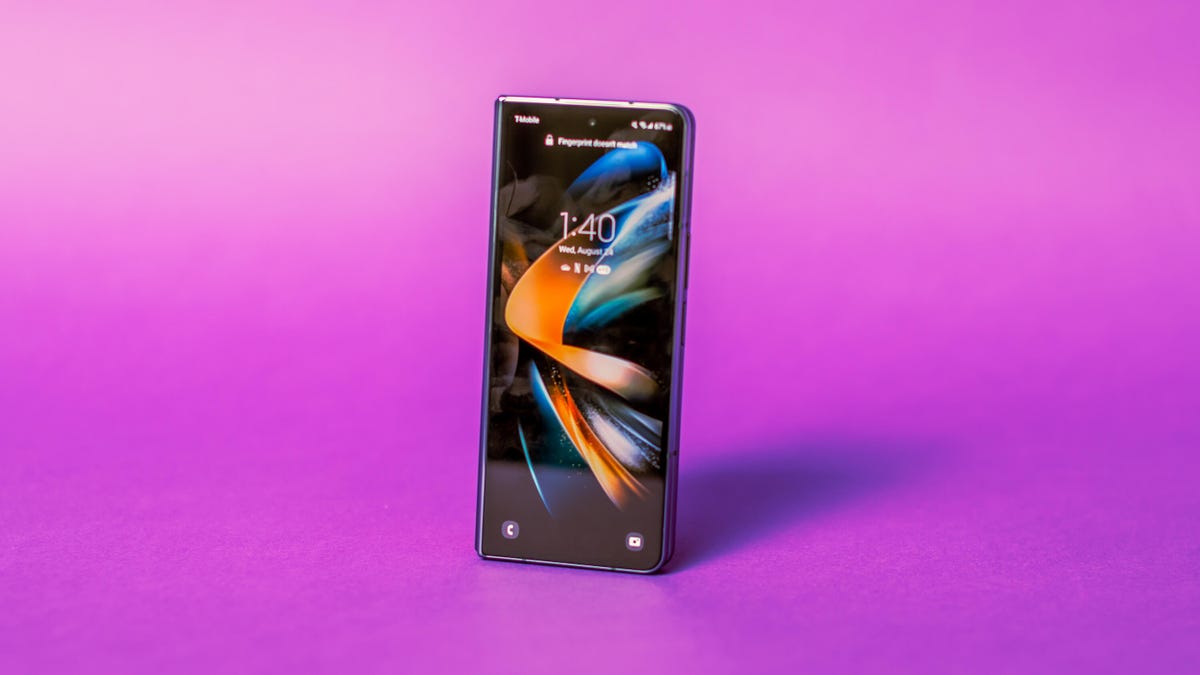
The Galaxy Z Fold 4 still feels thick when closed.
Samsung’s Galaxy Z Fold 4 has a sturdy build and a wide cover screen. But it still feels cumbersome to use as a regular phone when closed. The Galaxy Z Fold 4 measures 0.5 to 0.6 inch thick when folded, whereas the iPhone 14 and Galaxy S22 both measure roughly 0.3 inch thick. That extra bulk might not bother those who primarily use their Galaxy Z Fold unfolded in tablet mode. But it’s another barrier to adoption for those who aren’t yet convinced of the promise of foldable phones.
If a leak turns out to be true, Samsung may be planning to address the Galaxy Z Fold’s thickness. A well-known leaker who goes by the alias Ice Universe recently tweeted that the Galaxy Z Fold 5 will have a new water drop hinge. In a Twitter post replying to Ice Universe’s tweet, display analyst Ross Young said this type of hinge could make the device 0.3mm thinner.
A lower price
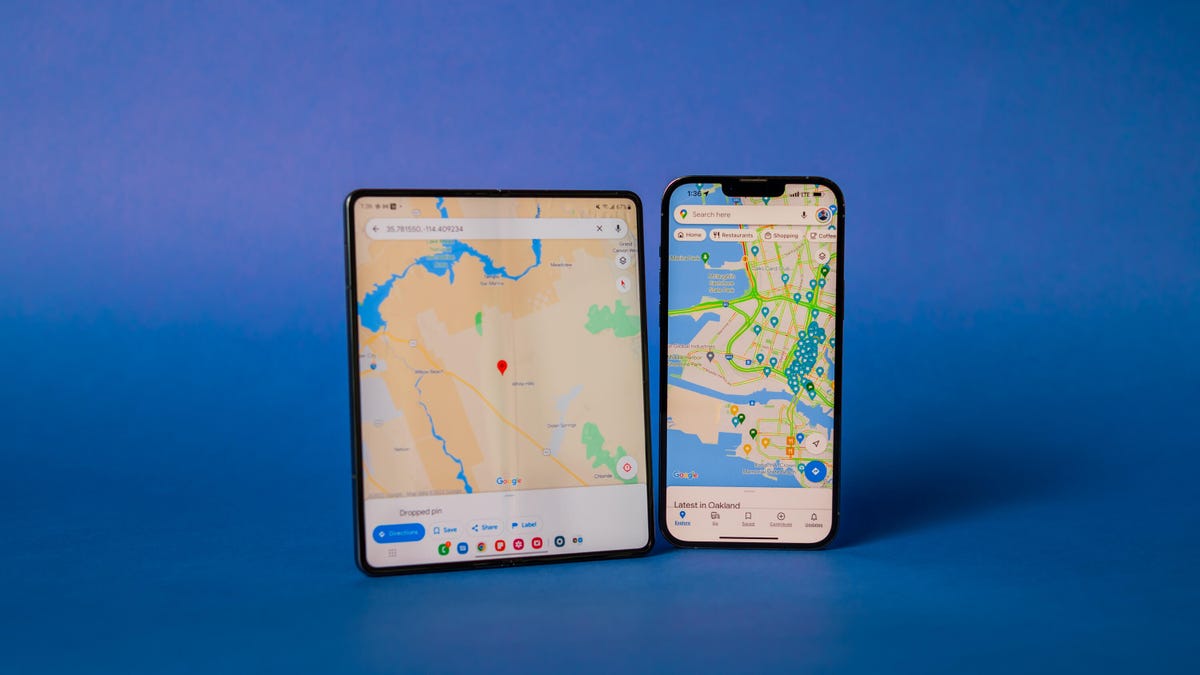
The Galaxy Z Fold 4 is significantly more expensive than your average nonfoldable phone at a regular price.
With a regular price of $1,800, calling the Galaxy Z Fold 4 expensive might be an understatement. You’ll get a discount when trading in an old device, with Samsung listing the 256GB model for $900 with an eligible trade-in. But that still lands at the high end of the spectrum compared to many nonfolding phones, like those in the Galaxy S22 lineup and Pixel 7 family.
Samsung is at least aware of this conundrum. «It’s definitely a challenge that we are tackling, and we will need to tackle,» TM Roh, president and head of Samsung’s mobile experience business, said in an interview with CNET earlier this year regarding the Z Fold’s price.
Foldable phones are still a nascent part of the broader smartphone market, but changes like these could push them closer to becoming viable alternatives to our everyday devices. Samsung helped popularize the big-screen phones we use today with its first Galaxy Note phone back in 2011. It’s trying to do the same with foldables, but there are clearly still challenges to overcome.
Technologies
If You’re Flying for the Holidays, This Bluetooth Dongle Transforms In-Flight Movies, and It’s 35% Off for Black Friday
Watch airplane movies just like you would at home with this game-changing device.
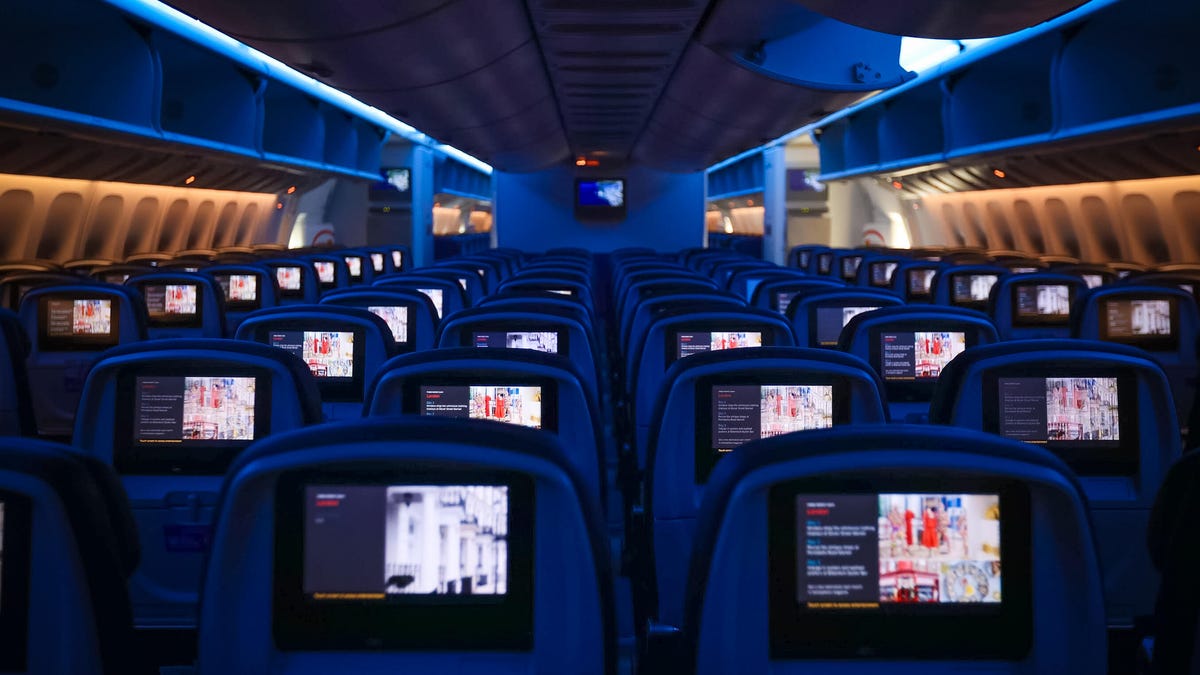
Air travel for the holidays can be stressful, especially when winter weather or flight delays force a change of plans, but one perk of flying still remains — watching new-release movies. However, in-flight entertainment on most airlines usually requires a wired set of earbuds. (And the ones the airline hands out are so bad they may as well not even be connected.)
I’d far prefer to use my wireless, noise-canceling AirPods Pro, but they connect only via Bluetooth. There’s a simple tech solution that makes viewing movies on the plane feel more like watching them on your couch.
The AirFly is a simple Bluetooth dongle that allows me to connect my wireless earbuds directly to the airplane’s entertainment system, eliminating the need for adapters or wired workarounds.
It’s become a must-pack item in my travel bag. Since I started using it, I’ve stopped dreading in-flight audio and finally get to enjoy movies on the plane. If you fly often, this little gadget could completely change how you travel. And the base level AirFly SE is 35% off for Black Friday at Amazon.
The AirFly Pro lets me enjoy in-flight entertainment
The AirFly Pro from Twelve South is a minimally designed dongle that allows me to connect to the 3.5mm headphone jack in my airplane seat, enabling me to listen to in-flight entertainment on my noise-canceling earbuds.
All I have to do is pair the AirFly with the Bluetooth headphones I’m using, such as my AirPods Pro, plug the AirFly into the display in front of me, and I’m all set. I don’t even need to use my phone to connect the two devices.
There are several versions of the AirFly: the AirFly SE, which is currently on sale for $26 on Amazon and connects to just one set of headphones, the AirFly Pro at $55, the Pro V2 at $60 and the Pro 2 Deluxe at $70, which comes with an international headphone adapter and a suede travel case.
Hey, did you know? CNET Deals texts are free, easy and save you money.
I use the AirFly Pro, which has been a game-changer for me on flights. I’ve never had to worry about battery life since the AirFly Pro lasts for over 25 hours and can be fully charged in just three hours. I can also pair two separate pairs of headphones to a single AirFly Pro, in case I’m with someone else on a flight and want to watch the same movie or show.
And if that’s not enough, the AirFly Pro also doubles as an audio transmitter, allowing me to turn any speaker with a headphone jack, such as my old car stereo, into a Bluetooth speaker.
The AirFly Pro makes a great gift for any traveler
The AirFly Pro is the perfect present to give to someone who’s planning to travel this year. Besides my Anker MagSafe battery pack, the AirFly Pro has become my most treasured travel accessory when I fly, which is why I consider it one of those can’t-go-wrong gifts.
For more travel gear, here are our favorite tech essentials to travel with and our favorite travel pillows.
Join Our Daily Deals Text Group!
Get hand-picked deals from CNET shopping experts straight to your phone.
By signing up, you confirm you are 16+ and agree to receive recurring marketing messages at the phone number provided. Consent is not a condition of purchase. Reply STOP to unsubscribe. Msg & data rates may apply. View our Privacy Policy and Terms of Use.
Technologies
Today’s NYT Connections Hints, Answers and Help for Nov. 24, #897
Today’s Connections puzzle is kind of tough. Here are hints, answers and help for Nov. 24, #897.
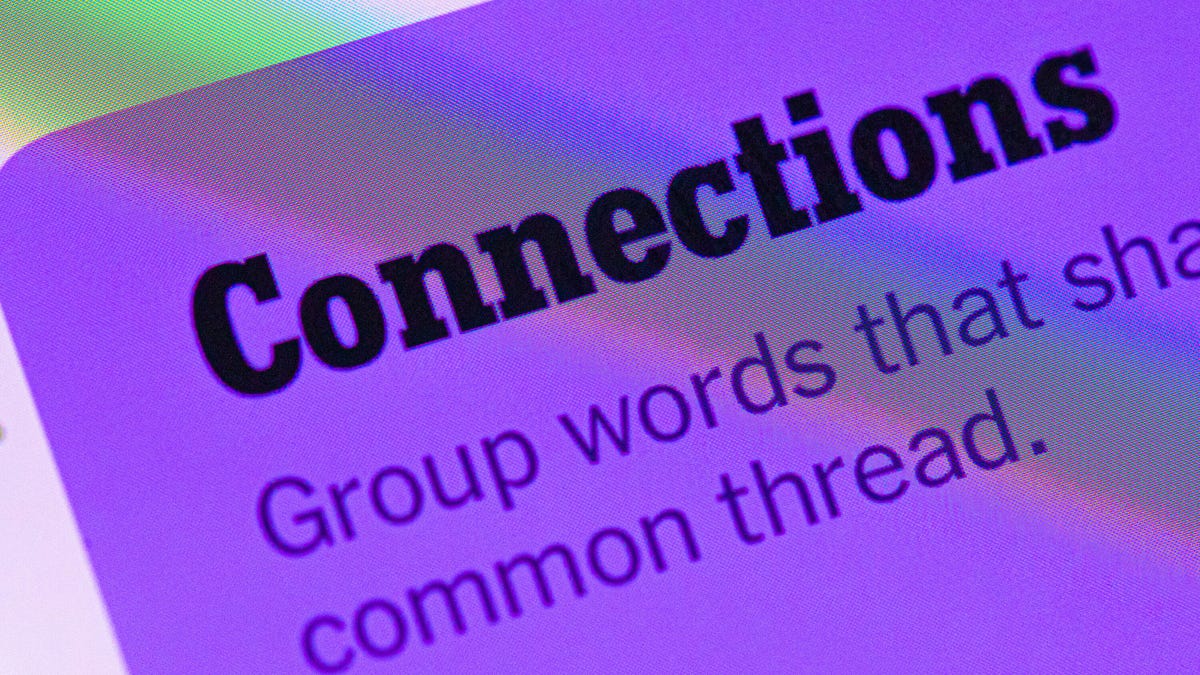
Looking for the most recent Connections answers? Click here for today’s Connections hints, as well as our daily answers and hints for The New York Times Mini Crossword, Wordle, Connections: Sports Edition and Strands puzzles.
Today’s NYT Connections puzzle is kind of tough. The purple category once again wants you to find hidden words inside other words. If you need help sorting the words into groups, you’re in the right place. Read on for clues and today’s Connections answers.
The Times now has a Connections Bot, like the one for Wordle. Go there after you play to receive a numeric score and to have the program analyze your answers. Players who are registered with the Times Games section can now nerd out by following their progress, including the number of puzzles completed, win rate, number of times they nabbed a perfect score and their win streak.
Read more: Hints, Tips and Strategies to Help You Win at NYT Connections Every Time
Hints for today’s Connections groups
Here are four hints for the groupings in today’s Connections puzzle, ranked from the easiest yellow group to the tough (and sometimes bizarre) purple group.
Yellow group hint: Like an air fryer.
Green group hint: In your vehicle.
Blue group hint: Take out your laptops, dump out your water.
Purple group hint: Like a rainbow.
Answers for today’s Connections groups
Yellow group: Small kitchen appliances.
Green group: Features of a car’s center console.
Blue group: Seen while going through airport security.
Purple group: Ending in colors.
Read more: Wordle Cheat Sheet: Here Are the Most Popular Letters Used in English Words
What are today’s Connections answers?
The yellow words in today’s Connections
The theme is small kitchen appliances. The four answers are blender, microwave, rice cooker and toaster.
The green words in today’s Connections
The theme is features of a car’s center console. The four answers are air conditioner, cup holder, radio and shifter.
The blue words in today’s Connections
The theme is seen while going through airport security. The four answers are bin, carry-on, metal detector and X-ray.
The purple words in today’s Connections
The theme is ending in colors. The four answers are infrared, marigold, stingray and ultraviolet.
Don’t miss any of our unbiased tech content and lab-based reviews. Add CNET as a preferred Google source.
Toughest Connections puzzles
We’ve made a note of some of the toughest Connections puzzles so far. Maybe they’ll help you see patterns in future puzzles.
#5: Included «things you can set,» such as mood, record, table and volleyball.
#4: Included «one in a dozen,» such as egg, juror, month and rose.
#3: Included «streets on screen,» such as Elm, Fear, Jump and Sesame.
#2: Included «power ___» such as nap, plant, Ranger and trip.
#1: Included «things that can run,» such as candidate, faucet, mascara and nose.
Technologies
Today’s NYT Connections: Sports Edition Hints and Answers for Nov. 24, #427
Here are hints and the answers for the NYT Connections: Sports Edition puzzle for Nov. 24, No. 427.
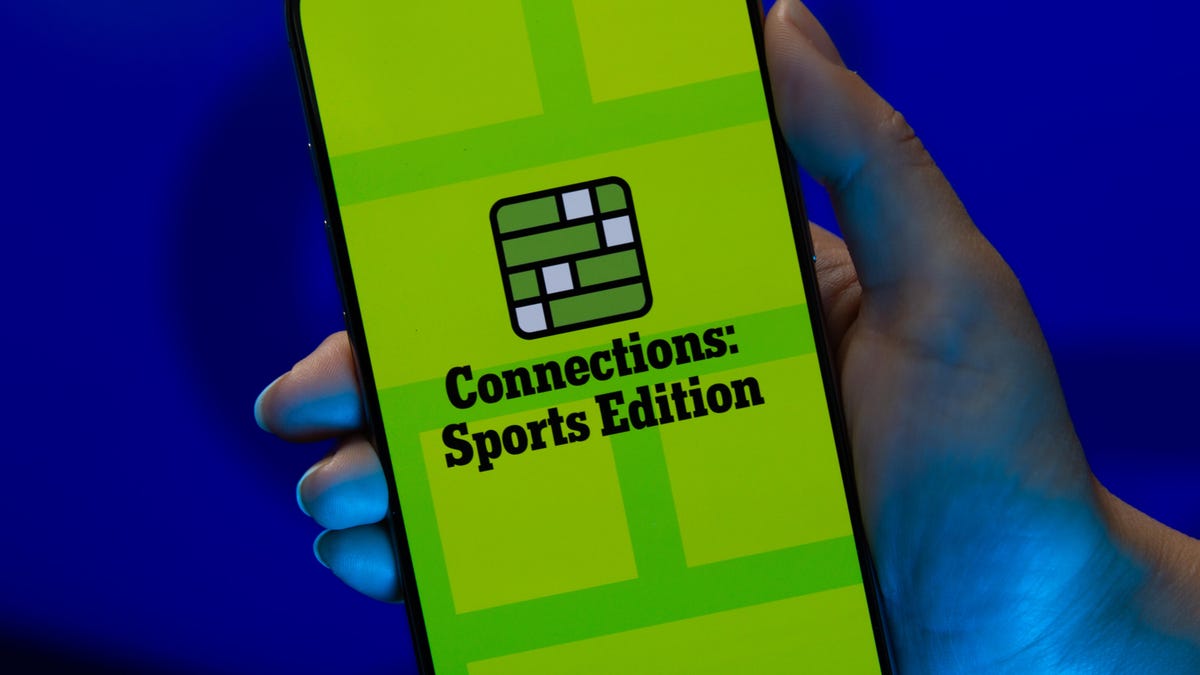
Looking for the most recent regular Connections answers? Click here for today’s Connections hints, as well as our daily answers and hints for The New York Times Mini Crossword, Wordle and Strands puzzles.
Music lovers, today’s Connections: Sports Edition has a fun green category for you. You’ll recognize some familiar phrases in the grid, I think. If you’re struggling with today’s puzzle but still want to solve it, read on for hints and the answers.
Connections: Sports Edition is published by The Athletic, the subscription-based sports journalism site owned by The Times. It doesn’t appear in the NYT Games app, but it does in The Athletic’s own app. Or you can play it for free online.
Read more: NYT Connections: Sports Edition Puzzle Comes Out of Beta
Hints for today’s Connections: Sports Edition groups
Here are four hints for the groupings in today’s Connections: Sports Edition puzzle, ranked from the easiest yellow group to the tough (and sometimes bizarre) purple group.
Yellow group hint: Not long pants.
Green group hint: Sing out.
Blue group hint: Gridiron guys who share a name.
Purple group hint: Like a law.
Answers for today’s Connections: Sports Edition groups
Yellow group: Types of shorts.
Green group: Popular arena/stadium songs.
Blue group: Football Drews.
Purple group: ____ rule.
Read more: Wordle Cheat Sheet: Here Are the Most Popular Letters Used in English Words
What are today’s Connections: Sports Edition answers?
The yellow words in today’s Connections
The theme is types of shorts. The four answers are basketball, bike, compression and gym.
The green words in today’s Connections
The theme is popular arena/stadium songs. The four answers are Eye of the Tiger, Jump Around, Sandstorm and Thunderstruck.
The blue words in today’s Connections
The theme is football Drews. The four answers are Bledsoe, Brees, Lock and Pearson.
The purple words in today’s Connections
The theme is ____ rule. The four answers are infield fly, mercy, tuck and unwritten.
Don’t miss any of our unbiased tech content and lab-based reviews. Add CNET as a preferred Google source.
-

 Technologies3 года ago
Technologies3 года agoTech Companies Need to Be Held Accountable for Security, Experts Say
-

 Technologies3 года ago
Technologies3 года agoBest Handheld Game Console in 2023
-

 Technologies3 года ago
Technologies3 года agoTighten Up Your VR Game With the Best Head Straps for Quest 2
-

 Technologies4 года ago
Technologies4 года agoBlack Friday 2021: The best deals on TVs, headphones, kitchenware, and more
-

 Technologies4 года ago
Technologies4 года agoVerum, Wickr and Threema: next generation secured messengers
-

 Technologies4 года ago
Technologies4 года agoGoogle to require vaccinations as Silicon Valley rethinks return-to-office policies
-

 Technologies4 года ago
Technologies4 года agoOlivia Harlan Dekker for Verum Messenger
-

 Technologies4 года ago
Technologies4 года agoiPhone 13 event: How to watch Apple’s big announcement tomorrow
